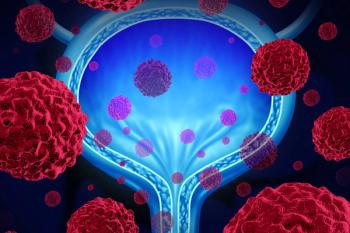
Physical Inactivity Linked to Kidney, Bladder Cancers
Lack of participation in any regular recreational physical activity was associated with a significantly increased risk for both bladder and renal cancers.
Lack of participation in any regular recreational physical activity was associated with a significantly increased risk for both bladder and renal cancers, according to the results of a hospital-based, case-control analysis
“Given that renal and bladder cancers are among the most common cancers in the United States, and given the persistence of recreational physical inactivity at the population level, replicating these findings with further investigations could be of significant public health importance,” wrote researchers Rikki Cannioto, PhD, EdD, MS, of the department of cancer prevention and control at Roswell Park Cancer Institute, and colleagues. “If the observed association between recreational physical inactivity and renal and bladder cancer is substantiated, additional work via targeted intervention studies should be pursued to characterize the dose of physical activity required to mitigate this risk.”
According to the study, despite recommendations for regular physical activity, about one-quarter of Americans remain completely physically inactive, and at least one-half are insufficiently inactive. Emerging evidence has revealed an independent link between obesity and certain cancers.
“Several biological mechanisms have been proposed to account for an association between recreational physical inactivity and cancer,” the researchers wrote. “These include an increase in circulating levels of sex hormones, increased chronic inflammation, impaired insulin sensitivity, impaired immune surveillance and responsiveness, increased adiposity, and a dysregulated adipokine milieu.”
Cannioto and colleagues investigated risk for bladder and renal cancer associated with lifetime recreational physical inactivity.
The study included 160 patients with renal cancer, 208 patients with bladder cancer and 766 age frequency-matched control patients without cancer. Patients were classified as physically inactive if they self-reported never participating in any regular recreational physical activity throughout their lifetime.
Patients with renal cancer had a significantly higher body mass index (P < .001) and were more likely to be physically inactive (P = .020) compared with controls. Patients with bladder cancer were more likely to be ever smokers (P < .0001) and to have a history of physical inactivity (P = .016) compared with controls.
There was a significant positive association between lifetime physical inactivity and both cancers. Lifetime recreational physical inactivity was associated with a 77% higher risk for renal cancer (odds ratio [OR], 1.77; 95% CI, 1.10–2.85; P = .019) and a 73% increased risk for bladder cancer (OR, 1.73; 95% CI, 1.13–2.63; P = .011).
The researchers also conducted an exploratory analysis stratifying patients by obesity status. In this analysis there were significant associations between physical inactivity and bladder (OR, 1.70; 95% CI, 1.08–2.69; P = .022) and renal cancers (OR, 1.75; 95% CI, 1.03–2.98; P = .040) among non-obese participants. According to the researchers, this suggest that “physical inactivity may associate with cancer via pathways that are, at least in part, independent of obesity-driven pathways.”
Newsletter
Stay up to date on recent advances in the multidisciplinary approach to cancer.

















































































